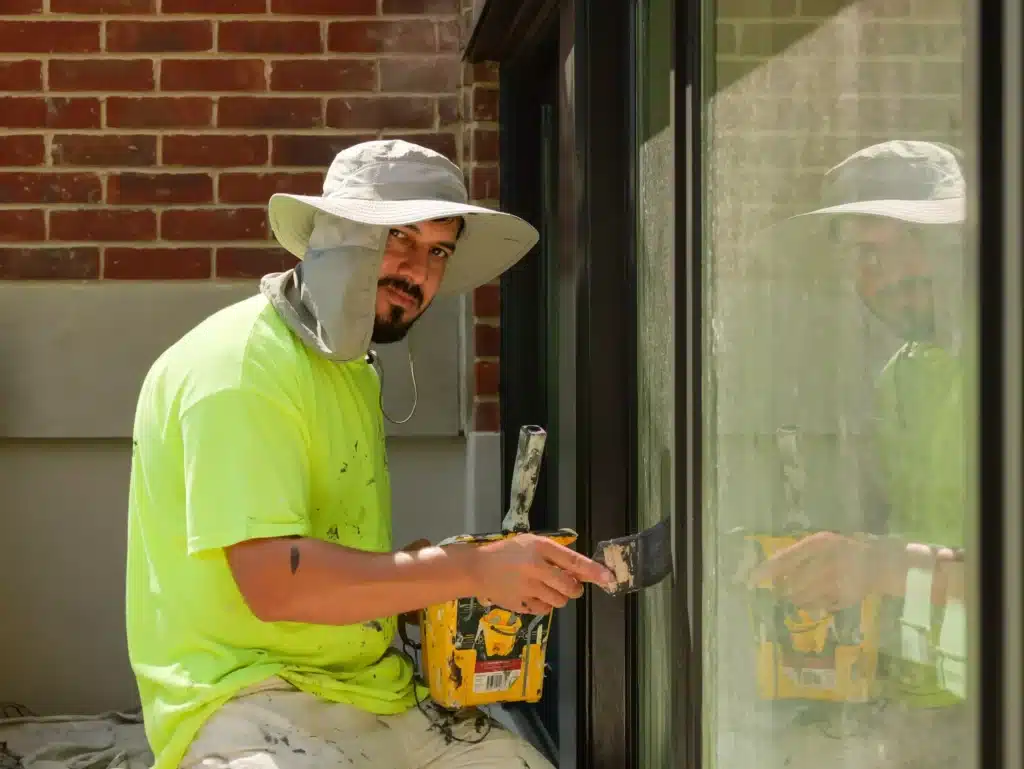
At Home Painters Toronto we’ve had all sorts of painting requests, and we love giving advice on new and creative ways to change your home with paint. Painting on glass (or mirrors, as the technique is the same) is a fun unique painting option that is surprisingly easy to implement. Painted glass: it’s not just for churches anymore!
However, before you paint the glass, you may find yourself asking: Do I need to prime the glass before painting?
If you’re looking for a quick answer, the short answer is “no.” But it’s worth taking a moment to explore why that’s the case.
Paint is designed to adhere to many different surfaces, and glass is no exception. In fact, it adheres better than most surfaces—and you want it too! You wouldn’t want your paint job to peel off after only a few months, would you?
So then why do some people choose primer for glass painting? Well, there are actually three reasons:
- To prevent reflection from sunlight or other light sources like fluorescent lights
- To fill in small cracks in the glass surface that might otherwise show through the paint job
- To help seal in moisture or humidity trapped inside the window frame
How To Paint on Glass
- Choose your paint. You’re looking for transparency, how easy it is to apply, permanence, and of course, colour. There are 3 main kinds of paint to use on glass. Acrylic enamel paint, acrylic paint mixed with a glass and tile medium, or specialized solvent-based paints. You can find these at your local craft store or home renovation store.
- Painting with acrylic paint, however, is the simplest, quickest, and most cost-effective option out of these three. You can get it at any hardware store, and it’s very easy to apply with a brush or roller. If you’re going for more permanent glass paint, opt for solvent-based paints specially formulated for glass. These will offer the best protection from UV rays and other environmental damage over time.
- Clean the glass with a bit of rubbing alcohol, or just soap and water.
- Set up like any other painting job by using drop cloths and taping around any surfaces you don’t want to be painted. (You don’t want spills!)
- Use a stencil if painting designs as an accent on glass windows, mirrors, or glass pieces.
- Use a variety of brushes for different effects. See our blog on Choosing a Paint Brush for some help.
- Load your brush with paint, and try not to go over areas you have already painted. That will just remove the paint that hasn’t adhered to the glass. If you do need to go over an area again, wait until the paint is completely dry, then lightly touch it up.
- Continue painting in this fashion until you’ve achieved your desired look.
Tips for Glass and Mirror Painting
- For something specialty like painting on glass, the cost will usually reflect in the finished product – don’t cut corners,
- Get high-quality glass paint.
- Read and follow all directions on the paint. For example, does it require a base coat? What is the drying time?
- Not all colours appear the same once they are painted. Try a test patch first to make sure it’s what you want
- Durability is especially important for using glass pieces – for example, wine glasses or plates.

Benefits of Painting On Glass
- You can change the way light is reflected and create a unique lighting effect in your home.
- Increased privacy, especially for ground floor windows.
- If it’s a commercial painting job, painted glass is a great way to advertise a business.
- Any glass pieces – such as glass lamps, tiles, cheese boards, wine bottles, or wine glasses – automatically become a one-of-a-kind discussion piece when painted.
As a company, we focus on delivering top-quality painting as well as unbeatable client services.
Call us now at 416 494 9095 or email us at [email protected] for a free quote to brighten up and beautify your unique home. Whether it’s faux finishes, wallpapering, accent walls, or, yes, painting on glass, we want to help! And don’t forget to follow us on all our social channels below as well!


